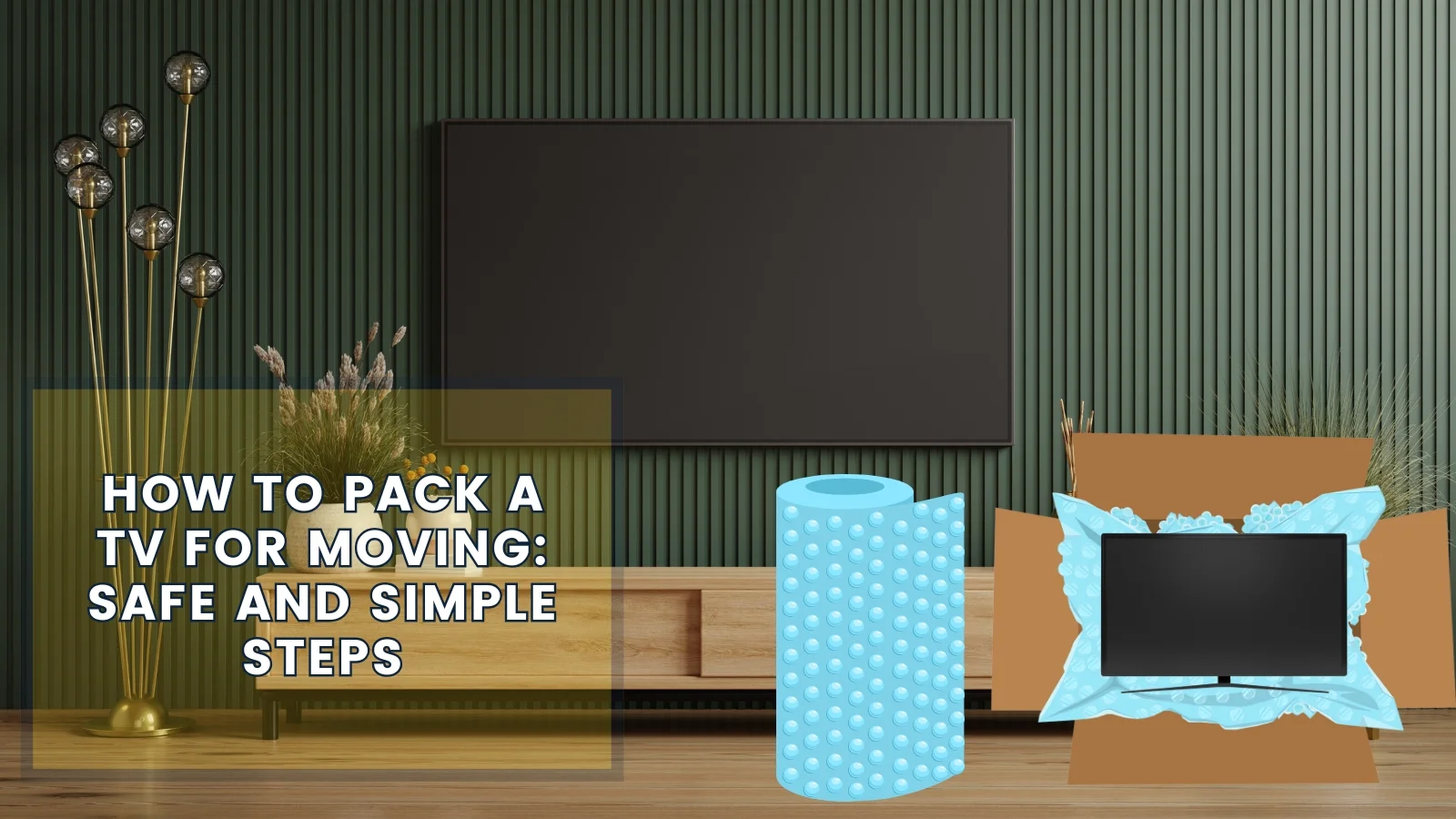Moving can be stressful especially when it involves packing delicate items like your television. TVs, with their large screens and sensitive components need special care during a move. If you’re preparing for a move, understanding the best way to pack your TV can save you from costly repairs or replacements.
Here, we’ll walk through the safe and straightforward steps to pack your TV.
Why Properly Packing Your TV Matters
Televisions are valuable and often fragile. Whether you have a big flat screen or a smaller LED model each type has specific packing needs. Moving without taking the right steps can lead to cracks, screen scratches or even total damage to the internal parts. Therefore, taking time to pack your TV securely will ensure that it arrives at your new place in perfect condition.
Gathering the Right Packing Materials
Before you start packing, gather all the necessary materials. If you still have the original box, that’s the best option. However, if you don’t, you can still pack your TV safely with a few basic supplies:
- TV box or moving box: A box that fits your TV size is ideal. If you don’t have the original one, you can buy TV-specific boxes from most packing and moving company
- Bubble wrap: To cushion the screen and other parts, bubble wrap is a great tool.
- Foam corner protectors: These prevent damage to the corners which are often the most vulnerable parts.
- Packing tape: Strong packing tape helps secure the wrapping and keeps the box closed.
- Soft blankets or sheets: If you don’t have enough bubble wrap, soft blankets can also work as padding.
Step-by-Step Guide to Packing Your TV
Here’s a simple, step-by-step guide to make sure your TV is packed safely for the move.
Disconnect & Organize Cables
Start by disconnecting all cables including power cords, HDMI cables and any other accessories. Label each cable to make it easier to set up your TV again later. You can use small zip-lock bags or label tags for this.
Tip: Keep the cables, remote and any other TV accessories together in a separate bag or box. It’s easy to misplace them especially during a big move.
Clean the TV Screen
Gently clean the screen and other surfaces with a microfiber cloth. Avoid using any liquid or chemical cleaners. A simple dry wipe will remove dust and prevent any dirt from getting trapped between the screen and the packing materials.
Note: Screens can be sensitive to scratches so avoid pressing down too hard when wiping.
Protect the Screen with Bubble Wrap
Wrap the screen with a layer of bubble wrap ensuring complete coverage. You can secure it with a little packing tape but avoid putting tape directly on the screen. If bubble wrap is not available, a soft, non-abrasive cloth or blanket can serve as an alternative.
Use Corner Protectors
Place foam corner protectors on all four corners of your TV. The edges are prone to breaking or chipping and these protectors can make a big difference in keeping them safe. Many packing and moving companies recommend corner protectors for all types of fragile items, especially TVs.
Cover the Entire TV
After covering the screen and adding corner protectors, wrap the entire TV with another layer of bubble wrap or a thick blanket. Secure it with packing tape but again avoid taping directly on the screen. This final layer acts as a shield against shocks and bumps during transit.
Place the TV in a Box
If you have the original TV box place the TV in it carefully. If not, use a TV-specific box that matches the size of your television. Many moving supply stores sell adjustable boxes designed to fit TVs. Place the TV upright in the box ensuring it doesn’t shift around.
Tip: Never lay your TV flat in the box as it increases the risk of screen damage.
Add Extra Padding
Once the TV is inside the box, add extra padding on all sides especially if there’s empty space. Use foam inserts, packing peanuts or crumpled paper to fill gaps and prevent the TV from moving inside the box. This padding is essential to protect the TV from impacts during the move.
Seal the Box
Close the box securely and seal it with packing tape. It’s a good idea to add extra tape to the bottom and top seams for reinforcement. Label the box as “Fragile” and indicate that it contains a TV. This will help movers know that they need to handle it with extra care.
Load the TV Carefully
When loading the TV into the moving vehicle, keep it upright and place it in a secure spot. Avoid putting heavy boxes on top of it. Ideally, position the TV between soft items like mattresses or cushions for added protection. If you’re using a packing and moving company, let them know that the box contains a TV. They are trained in handling delicate items and can help ensure your TV stays safe throughout the move.
Tips for Packing Different Types of TVs
Not all TVs are the same and different models might need slightly different packing approaches. Here are some tips based on popular TV types:
- Flat-screen TVs: These are the most common type today. Follow the steps outlined above, as flat screens are often large and fragile.
- OLED TVs: These models are ultra-thin and can be more fragile than other TVs. Use extra padding and avoid placing any pressure on the screen.
- Curved TVs: Curved TVs are designed to offer a unique viewing experience but the curve adds an extra layer of fragility. Use plenty of padding around the screen to keep the curve intact.
- Older models with CRT: If you’re moving an old CRT TV, these tend to be heavier and less fragile than flat-screen models but still need careful packing. Use a sturdy box and secure it to prevent movement.
Common Mistakes to Avoid When Packing a TV
Packing a TV isn’t overly complicated but some common mistakes can increase the risk of damage:
- Using the wrong size box: An ill-fitting box can cause shifting which can damage the TV. Make sure the box fits snugly around your TV.
- Laying the TV flat: Always keep your TV upright, both when packing and loading. The flat position increases pressure on the screen and can lead to cracks.
- Neglecting to label: Failing to mark the box as “Fragile” might lead to rough handling by movers.
- Skipping padding: Proper padding is essential, even if you’re only moving a short distance. TVs are sensitive to shocks and padding absorbs the impact of bumps.
So, whether you’re handling the packing yourself or hiring professionals, prioritizing your TV’s safety is a smart step. Moving day is often hectic but knowing that your TV is packed securely will let you relax and look forward to setting it up in your new home.








